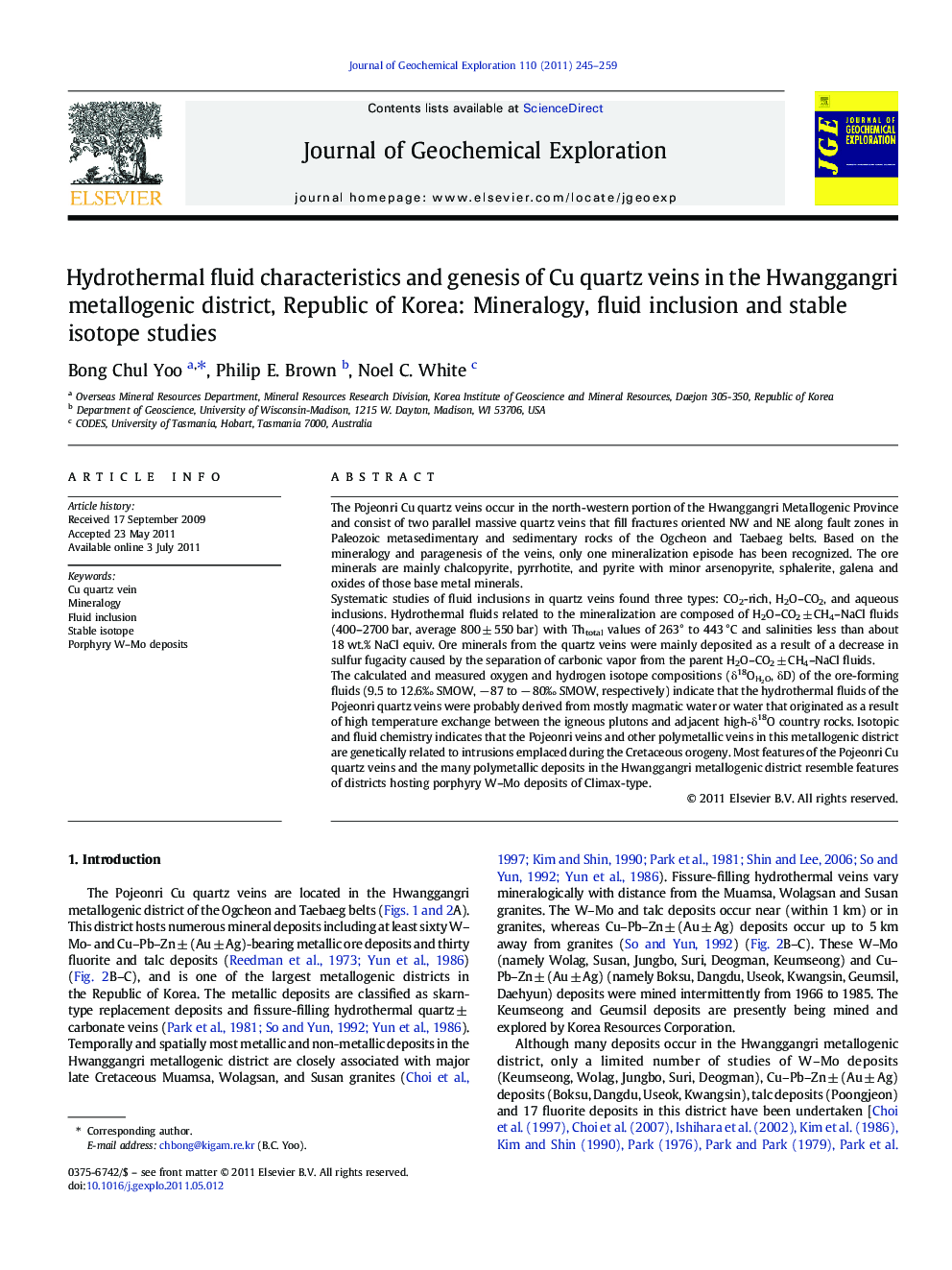| کد مقاله | کد نشریه | سال انتشار | مقاله انگلیسی | نسخه تمام متن |
|---|---|---|---|---|
| 4457827 | 1620944 | 2011 | 15 صفحه PDF | دانلود رایگان |

The Pojeonri Cu quartz veins occur in the north-western portion of the Hwanggangri Metallogenic Province and consist of two parallel massive quartz veins that fill fractures oriented NW and NE along fault zones in Paleozoic metasedimentary and sedimentary rocks of the Ogcheon and Taebaeg belts. Based on the mineralogy and paragenesis of the veins, only one mineralization episode has been recognized. The ore minerals are mainly chalcopyrite, pyrrhotite, and pyrite with minor arsenopyrite, sphalerite, galena and oxides of those base metal minerals.Systematic studies of fluid inclusions in quartz veins found three types: CO2-rich, H2O–CO2, and aqueous inclusions. Hydrothermal fluids related to the mineralization are composed of H2O–CO2 ± CH4–NaCl fluids (400–2700 bar, average 800 ± 550 bar) with Thtotal values of 263° to 443 °C and salinities less than about 18 wt.% NaCl equiv. Ore minerals from the quartz veins were mainly deposited as a result of a decrease in sulfur fugacity caused by the separation of carbonic vapor from the parent H2O–CO2 ± CH4–NaCl fluids.The calculated and measured oxygen and hydrogen isotope compositions (δ18OH2O, δD) of the ore-forming fluids (9.5 to 12.6‰ SMOW, − 87 to − 80‰ SMOW, respectively) indicate that the hydrothermal fluids of the Pojeonri quartz veins were probably derived from mostly magmatic water or water that originated as a result of high temperature exchange between the igneous plutons and adjacent high-δ18O country rocks. Isotopic and fluid chemistry indicates that the Pojeonri veins and other polymetallic veins in this metallogenic district are genetically related to intrusions emplaced during the Cretaceous orogeny. Most features of the Pojeonri Cu quartz veins and the many polymetallic deposits in the Hwanggangri metallogenic district resemble features of districts hosting porphyry W–Mo deposits of Climax-type.
► Fluid inclusion and stable isotope are most useful tools to study the genesis of ore mineralization.
► Quartz samples were selected for their analysis.
► Ore-forming fluids are aqueous–carbonic fluids.
► Fluids were mostly derived from magmatic water and partly water that originated country rock.
Journal: Journal of Geochemical Exploration - Volume 110, Issue 3, September 2011, Pages 245–259